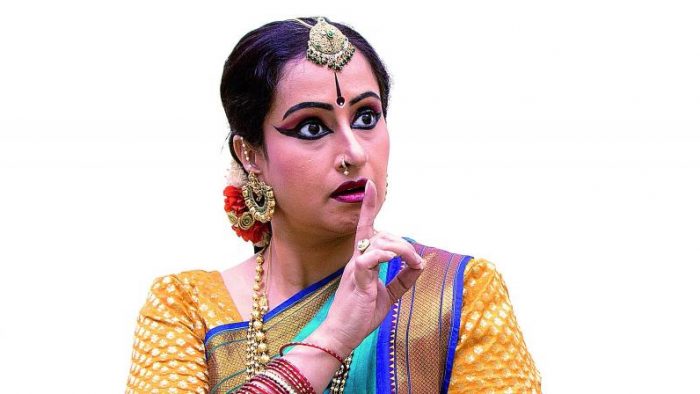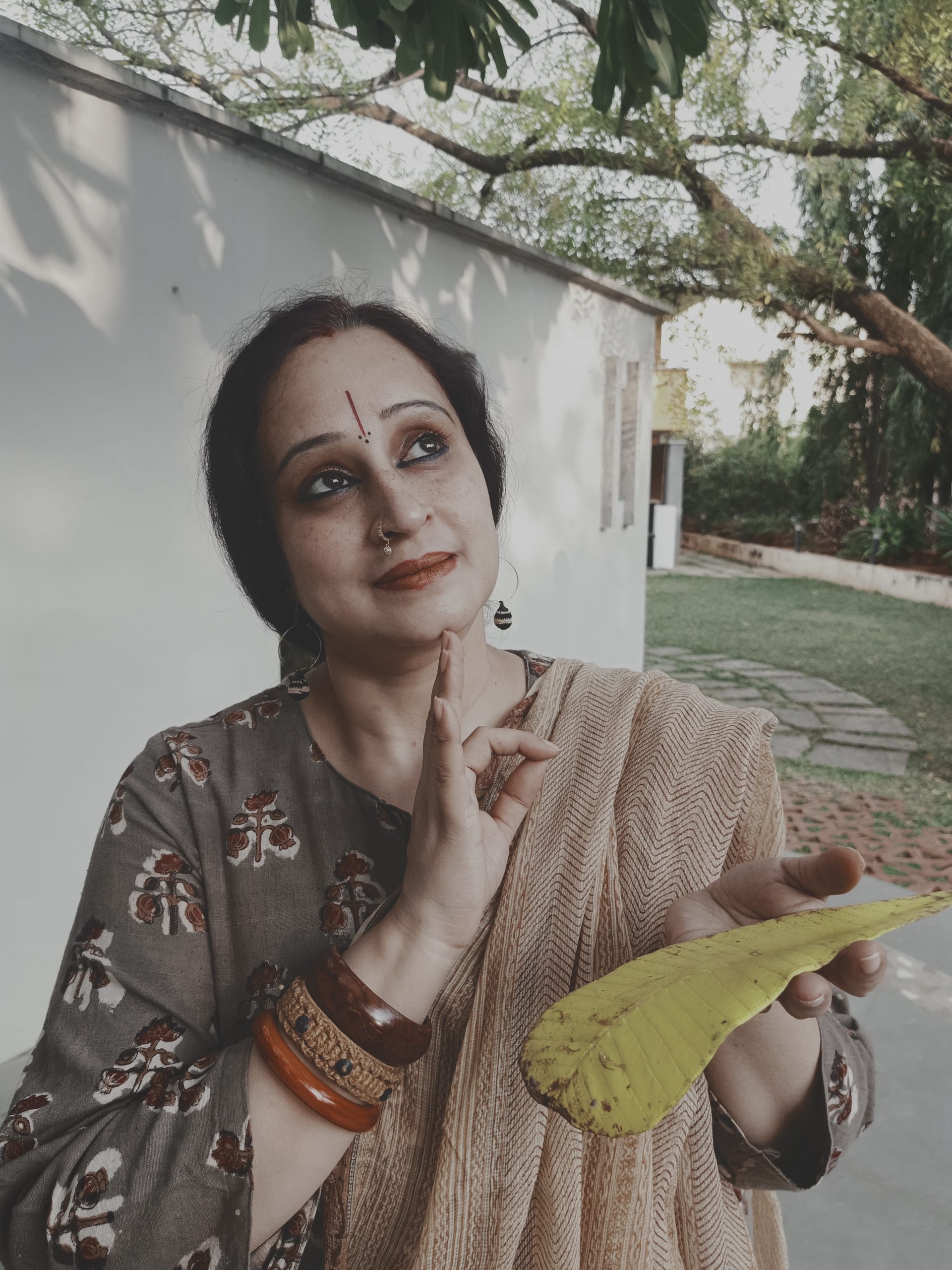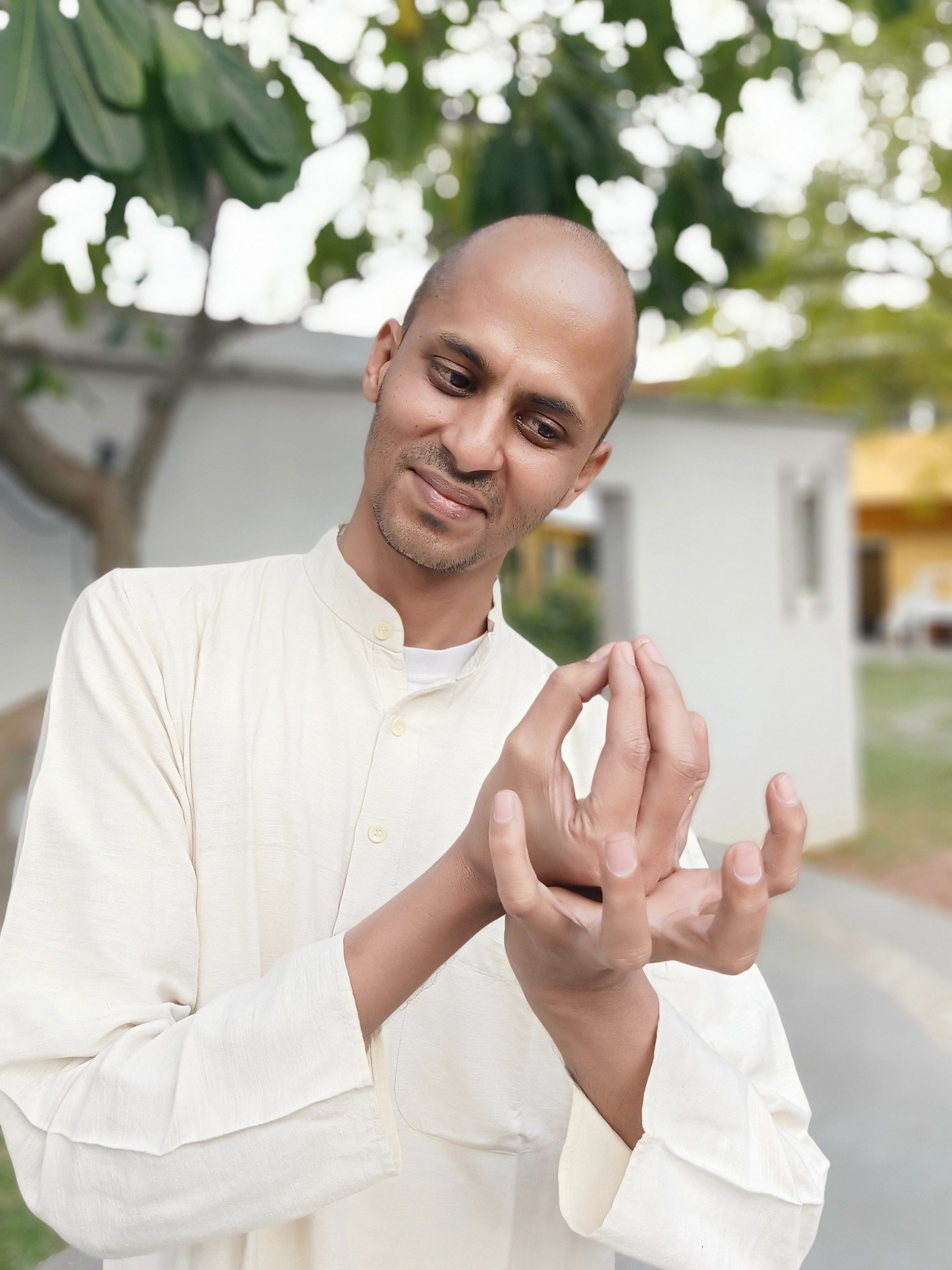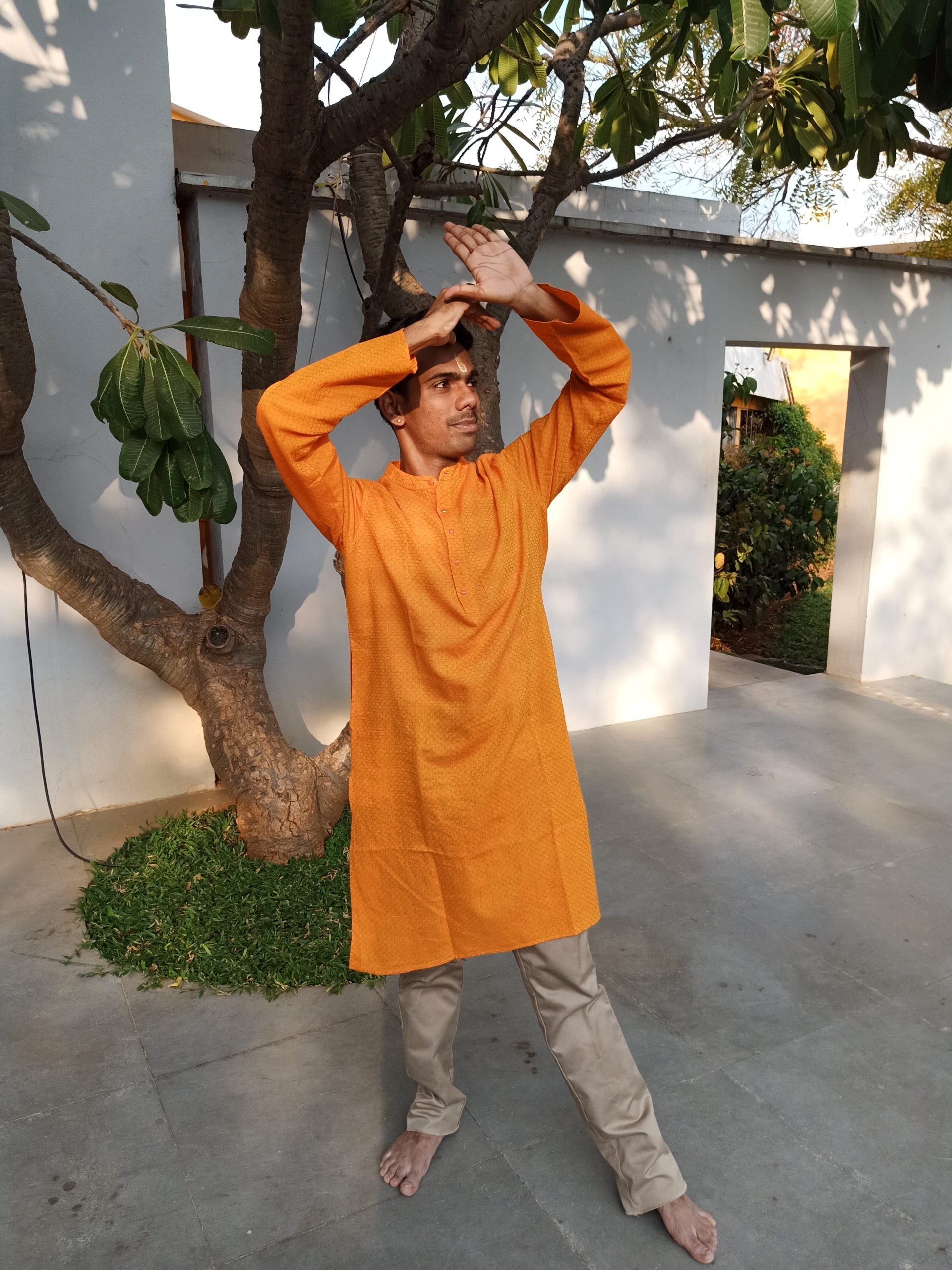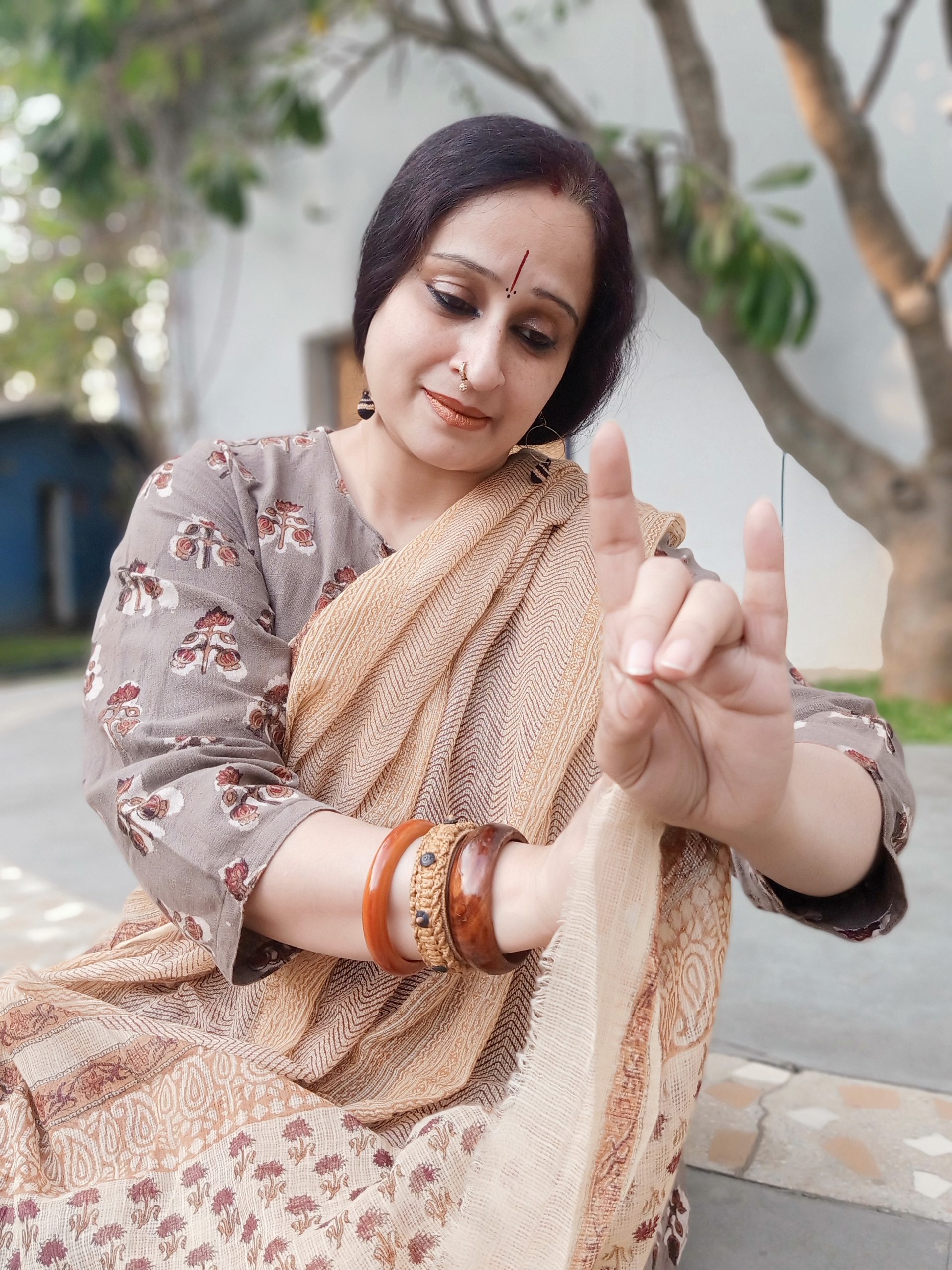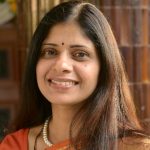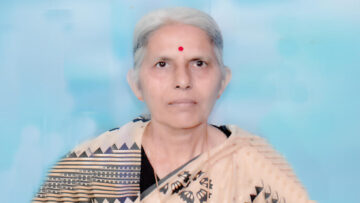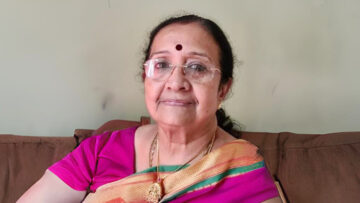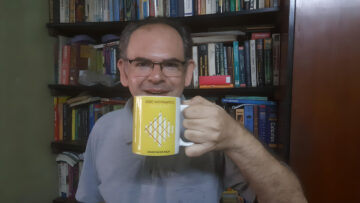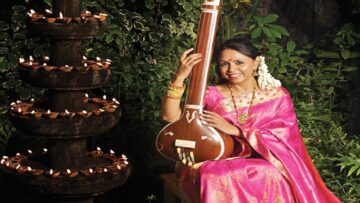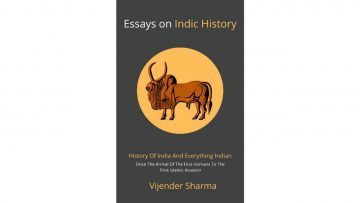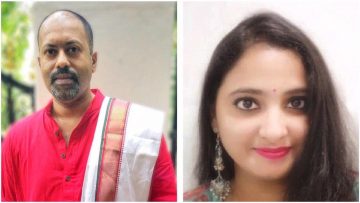The Fifth Ramachar Memorial Concert presents Sanskritotsava, a Dance Presentation showcasing Sanskrit texts on Natya (Dramaturgy), Alankarashastra (Aesthetics and Poetics), Ithihasa (Epics), Kavya (poetic works), Nataka (Dramatic works), Stotra literature, and Pada Sahitaya (Song format) on 9th February, 2020 at Hyderabad.
Kuchipudi and Vilasini Natyam practitioner Anupama Kylash speaks to Indic Today about the importance of Indian treatises and Sanskrit for dance. She also explains her choice of texts for this unique concert.
‘Geetam vaadyam tathaa nrityam, trayam sangeetamuchyate‘, says the Sangeeta-Ratnakara. Sangeetam constitutes lyrics, instruments, and dance. What is the role of music in being the carrier of the language in your production?
In ancient thought, dance, and music were not separate. They were one composite unit. So the word sangeeta comprises of dance, instrumentation, and song. They were always considered samahara kalas involving all these elements.
Music is a very large carrier of the language in the production, because the pieces chosen for this particular production consists of all types of chandas or prosody. So we have the Sanskrit shloka format, which of course consists of chandas like Anushtup. I also considered using Jagati.
I have tried to pick pieces, which while in the shloka verse format, can also be applied to rhythm in some way or the other, because every free verse, may not be musically or visually appealing from the point of view of a performance. So you need to have a mixture of the rhythmic, as well as the melodic component, in order to be able to appreciate and enjoy a visual presentation.
Verses from the Valmiki Ramayana are in the Anushtup Chandas, but we have used rhythmic patterns and melodic structures to enhance the dramatic effect of a particular piece. The piece we have chosen is the very beautiful long shloka, where Narada is explaining to Valmiki about Rama, telling him this is the story of the man about whom you are going to write. It starts with इक्ष्वाकुवंशप्रभवो रामो नाम जनैः श्रुतः |
So he says this great Scion of Ikshavaku is who you are going to write about. The whole shloka describes Rama in detail. We have used music in such a way, that you enhance each and every quality of Rama that is being depicted there. We have used a rhythmic scheme, because the meter of Sanskrit Chandas or even the metre of Telugu Chandas (Utpalamala or a Champakamala poem) has a clear demarcation of matras which makes it fit into a distinct rhythmic scheme. The rhythmic scheme may not be in tandem with modern day tala. It may not fit into an Adi Tala or a Rupaka Tala, or a Mishra Chapu, but is very distinct; and can sometimes can be manipulated a little for visual representation.
Another way in which I have tried to bring out the beauty of the language through the music is by retaining the free flowing verse format of the shloka, but also have a rhythmic structure going on in the background.
We have also used the visual component and the music to enhance the language. We have done this in the shlokas we are using from Bharatarnavam to speak about the Pushpanjali offered to the different Gods. Here we have employed a lot of little nuancing of movements and musical notes to differentiate between the different flowers, the different deities, the different tattva or nature of each deity. In Rasamanjari we have different kinds of Nayikas and Nayakas; so the ragas and the melodic schemes that have been employed, are also trying to essentially reflect the mood that the language is creating; as effectively as possible.
We are also using the typologies of the music as well. We are using Jayadeva’s Ashtapadis to represent Pada Sahitya. We all know that Jayadeva is an eastern poet and we are using the Bhajan Sankeertan format of the eastern poetry, for the eulogising or the invocatory quality of Jayadeva’s song.
So we are employing different types of musical patterns, different percussions, and other techniques to bring out the essential nature of the language. Also the type of Sanskrit employed in each of them is so different. The Sanskrit employed in the Valmiki Ramayana is filled with grandeur; the Sanskrit in Jayadeva’s Gitagovinda is filled with lyrical quality, because it is in song format; the Kumarasambhava has different qualities, as it is an epic poem; while the extract from Abhijnanashakuntala brings out the natya or the dramatic element through the music.
You have selected Sanskrit verses from different source texts, how does dance nuance the language differently from these various texts?
Everything is in Sanskrit but the quality of the Sanskrit used in various texts never replicates. If we look at Kumarasambhava, the kind of shloka we have used is very different from within the other works of the same poet also. If we look at Abhijnanashankuntala, the way the way the vana jyotsna or the creeper is addressed by Shankuntala when she is leaving the grove, the lilt and the tone of language is different. Whereas the shloka from Kumarasambhava where Parvati is berating Lord Shiva who comes in the form of a sannyasi, and asks her “why are you doing penance for this man who is uncouth?” the language is very grand. The kind of stress she puts on her words to put her point across, comes out very differently in the body language.
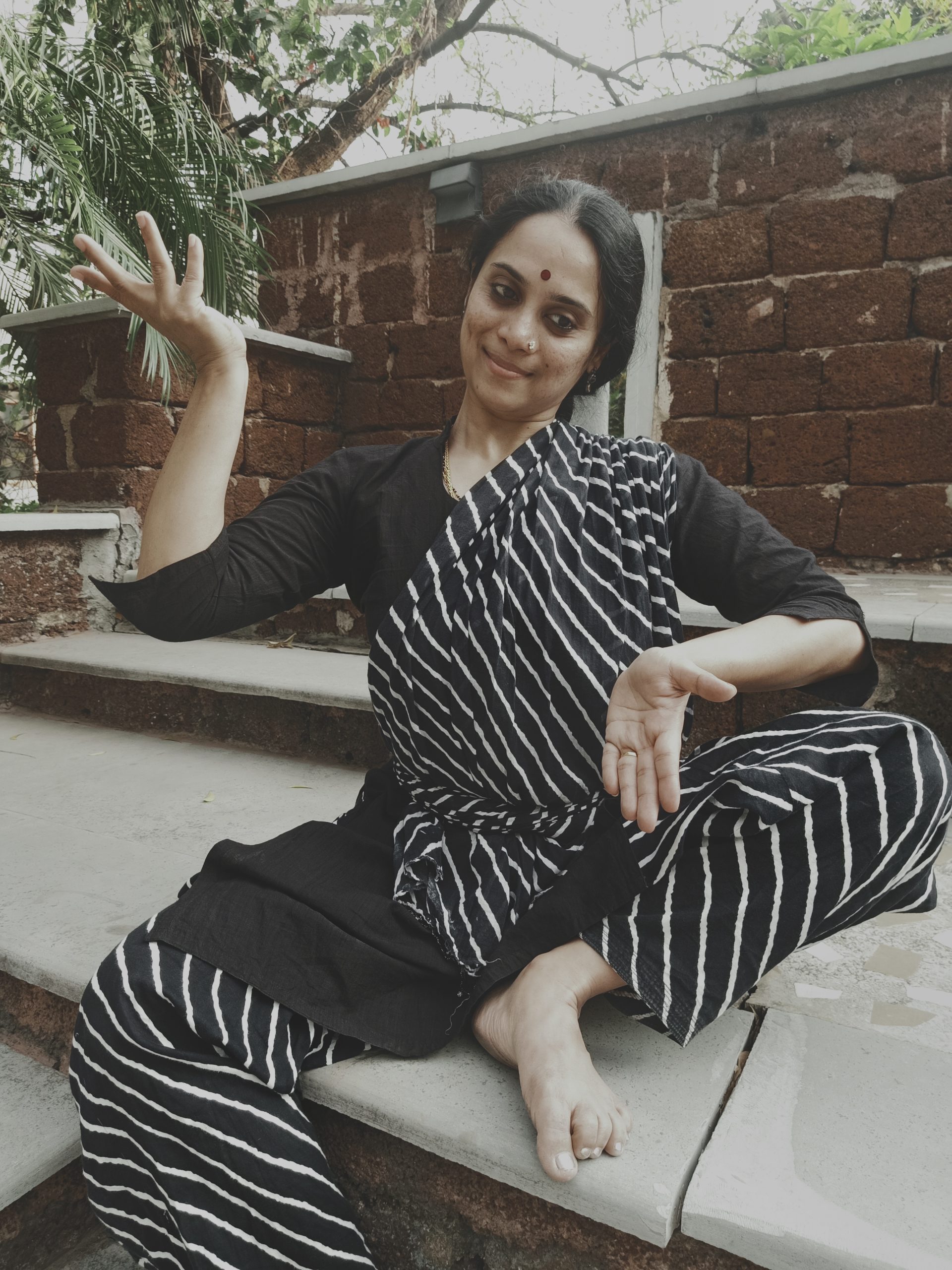 When you take a text like Rasamanjari, it is not even a poetic text. It is a text on poetics, which tells you the categories of Nayikas or Nayakas, or the categories of Sahayakas (people who assist the heroes and heroines). Even though it is not a poetic work, the poetic verses given as examples for each category of Nayika, they are so exquisite. And the meter is so beautiful that you can enact them, dance them. Alliteration helps in the dance composition, the length of the line, the way the line is unfolding, all these are elements that help us nuance the language.
When you take a text like Rasamanjari, it is not even a poetic text. It is a text on poetics, which tells you the categories of Nayikas or Nayakas, or the categories of Sahayakas (people who assist the heroes and heroines). Even though it is not a poetic work, the poetic verses given as examples for each category of Nayika, they are so exquisite. And the meter is so beautiful that you can enact them, dance them. Alliteration helps in the dance composition, the length of the line, the way the line is unfolding, all these are elements that help us nuance the language.
Depending on the nature of the language, the dance depiction or interpretation, gets renewed. When there is a metaphor occurring in the literature, it gives the dancer scope to show several other metaphors, or images which are in sync. If the Nayika is saying, “why are you separated from me?” the dancer can show separation in different aspects of nature. You can talk about the fish being separated from water. The text gives you guidance, but the dancer has to read between the texts; and further enhance the possibility of the text initially through Angika and eventually through Sattvika Abhinaya.
How did you select the texts, what is their role in highlighting the language?
We have selected varied genres which are distinctly different from each other. We have tried to incorporate one piece from a dramaturgy text, the obvious being the Natyashastra, as a precursor to all the other Natya texts. In this we have used the Naandi or the benedictory verses given in the beginning. In Kuchupudi Yakshganam, a style which I do, the Naandi has been incorporated from the Natyashastra.
We have comprehensive Hastas (hand gestures) described in later texts like the Bharatarnavam, or the Abhinaya Darpana which talk about a variety of possibilities for gestural Abhinaya. Abhinaya-Darpana talks about the Dikpalaka hastas or the devata hastas, Dashavatara hastas, the Bandhavya hastas which is very rare (showing relationships – husband, uncle, mother-in-law, father-in-law). It is interesting how these texts have made these hasta groups. Through Bharatarnavam, we wanted to bring out the different hastas of flowers that are employed in worshipping the Trimurti and their consorts.
I wanted to also bring in Alankarashastra, because poetics or the discussion of the hero/heroine and their assistants is very primary to Shringara Abhinaya of almost all dance styles. But we wanted to explore different types of Nayakas and Nayikas here; and there are only two texts which comprehensively talk only about them. In all the other texts the Nayaka Nayika prototypes are only a part of the larger text. In this presentation we chose Bhanu Datta’s Rasamanjari to present some of these ideas.
We wanted to represent Kavya and Nataka through the best poet one can think of- Kalidasa and so we chose Kumarasambhava for Kavya, and Abhijnyanashankuntala for Nataka. The reason I chose the most popular works because we are also representing the genre through this. Later in other productions we can bring in the rare Kavyas and Natakas, which are not popularly known.
For the Epic form, we chose the Valmiki’s Ramayana for the sheer grandness of the work. I chose a very long shloka where Narada describes to Valmiki about Rama. We use the words in two ways. The words are a physical description of Rama, as well as a description of his qualities. So while that is being enacted in one side of the stage, on the other side of the stage, not picking up the Padartha Abhinaya or word to word meaning, another person will be enacting the story element.
This is an important component in Indian dance, and something that we have to think about, as there is the literature which acts a guide, there is the language which has several layers –the padartha, the vakyartha (bring out what the line is saying in totality, even if your hands are not going according to the word break up) and the gudhartha (or the hidden meaning), the visheshartha (where the similes, metaphors and proverbs are being used by the poet to denote some kind of an emotion) and the vipareetaartha (where the line is saying something but means something else).
In the Stotra literature, we chose Krishna Karnamruta not only because of its exquisite literary merits, but also because it is employed a lot in the art of dancing, especially of South India. I chose it because the lyrical and musical quality is very conducive to do extensive Sattvika Abhinaya. I chose a piece where the Gopikas are so enamoured by the way Krishna plays the flute, that they leave everything and come to him. We wanted to highlight the concept of Sharanagati. The Bhagvatapurana also states that it is the highest form of surrender, when you leave everything to the lord. There are pieces which describe how the Gopikas even leave their children, and go to Krishna; which shows that you have to give up your highest attachment to go to God.
To represent the song format or the Bhajana Sampradaya, we have used Jayadeva Kavi; for the simple reason that his is one of the first works employing Sanskrit in the song format, rather than the Shloka or Stotra format.
We wanted to end with a Mangala by Narayana Teertha who wrote the Krishna Leela Tarangini, because we wanted to show how Sanskrit sounds, when it is written by a Southern Indian poet; who primarily looked at the Harikatha and Bhajana Sampradaya.
Bharata Muni’s Natyashastra is the ultimate resource for reference on every aspect of dance. While more and more academics and dancers are referring to the Shastra, are there enough resources and resource texts to teach this ancient work?
I don’t think there are enough resources to teach the ancient works. According to me when you read a text, you should have a three pronged approach. The first has to be the context reading. What is the context in which the text has been written? You cannot say Natya, and then interpret it in the modern context as dance, instead of dramaturgy. Context includes the period, the author, and the philosophy to which the text belongs; and the artistic traditions that the text addresses.
The second layer reading would be the content reading. For example, the Abhinaya Darpana, of Nandikeshwara is a tailor made text for dance. It explains Abhinaya, showing Angika Abhinaya, and some elements of body movements. It is more of a ‘cut-paste text’ put together for the convenience of the practitioner. Natyashastra on the other hand, is like an unending fabric. It is a seamless text which flows from one idea to the other, and is far more difficult than it appears to be.
After context and content reading, is the core reading of the text. Here is where the problems arise, because if you look at a Sanskrit text on Natya, Rasayana shastra, or Shilpa, it is not enough for a person who is translating it, to be a scholar in just Sanskrit. Even though the Sanskrit that he knows will be sufficient to translate the work grammatically, the intent and content translation will be possible only for someone who knows the subject.
I think it is very important, that a practitioner of the style is also able to read a text. If you want to know how the Rangamandapa is established, just by seeing the text and reading a translation written by a scholar, you will not understand it. For that, you have to go to the sthapathis, the Shilpashastra experts. We can pick up the Abhinava Bharati and see it as a commentary to the Natyashastra, but how much a student of dance will actually understand, without the decoding some of the other elements, is something we have to give a serious thought to. That is what I mean, when I say there are not enough resources to teach ancient works.
The Natyashastra consists of thirty-six chapters, but most artists focus on the ‘Angika’ aspects. How does looking at the text in its entirety help in a better expression of the dance form?
Angika is the mode of expression. Natya needs Vachika, because it needs the text and the spoken word.
The Natyashastra has several chapters on Hasta Abhinaya and the Angika Abhinaya aspects, on Vachika Abhinaya, a separate section for Aharya Abhinaya (costume), but it doesn’t have a chapter called Sattvika Abhinaya. When we look at the Natya-Sangraha or the eleven components of the Natyashastra, in every single one of them the goal is Sattvika Abhinaya.
Whether we are using Angika, Vachika, or whether we use the lesser Aharya Abhinaya, these are all meant for Sattvika. Without realisation or Rasasiddhi, without the Bhava culminating in Rasa, without the Rasanishpatti, there is nothing in the performing arts. Unless we are able to create that kind of an aesthetic experience, there is no point.
The idea of looking at a text in its entirety, will help us understand the dance better; whether it is from the point of the Ranga, the Purvarnga, the construction of the Natya Mandapas, the use of music, Dhvani, instruments, whether it is the Rasa theory, the interactive aspect between the Vibhavas, Anubhavas, Vyabhicharibhavas, all of this is intended towards one goal, which is to create bliss or an aesthetic experience for the spectator, who has to be a Sahridaya.
What do these texts themselves offer to a student of dance? Are there workshops/courses offered alongside dance training to interpret these texts?
Not enough. It would be ideal if the kind of training we have today for the arts was truly holistic. In order to be a complete dancer, you should also have a training in music, training of texts, training of Puranic legends, and you have to have training of Abhinaya. Without all these composite trainings, you cannot actually be a complete dancer.
Today it has become piece meal. There are very few takers for workshops or courses which are offered with dance training, because no one is really interested in the theoretical aspect of dance. If I say I am going to interpret the text of the song, and the student can choreograph it to the best of her ability, there is a hesitation. Today if you say you are a professional dancer, it is enough if you have a good well trained body, you have your aesthetics, and you dance fairly well, people think that is enough. A lot of people are making careers out of just that much. Unfortunately everything has become performance oriented.
The texts offers a world of possibility, a deep understanding of Bhava, of Abhinaya. The texts of Alankarashastra offer the widest range of possibilities in interpretation through images and motifs, while the actual literary texts offers a world of literature. I think engagement with texts should happen more and more, so that we get informed productions, informed dancing, we get more and more thinking dancers, who can contribute to the corpus of knowledge through the performing arts.
(The concert is the culmination of a two-day workshop by Scholar-Trustee IGNCA, Prof Bharat Gupt, featuring varied Indian texts. Concert Chief Guest is Professor Bharat Gupt and Guest of Honour is Dr Nagaraj Paturi, Director Inter-Gurukula University Center – Indic Academy.)
Disclaimer: The opinions expressed in this article belong to the author. Indic Today is neither responsible nor liable for the accuracy, completeness, suitability, or validity of any information in the article.

